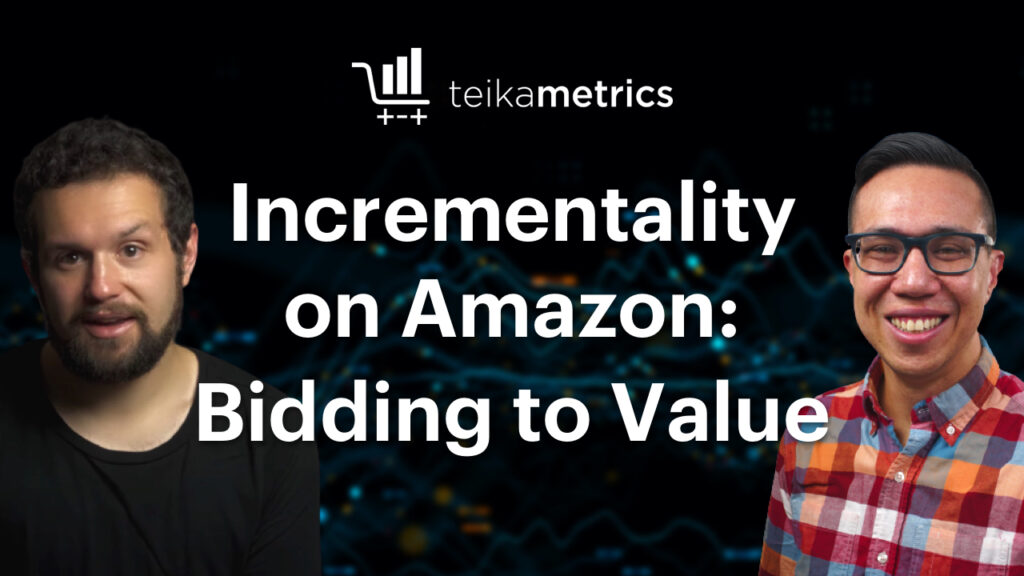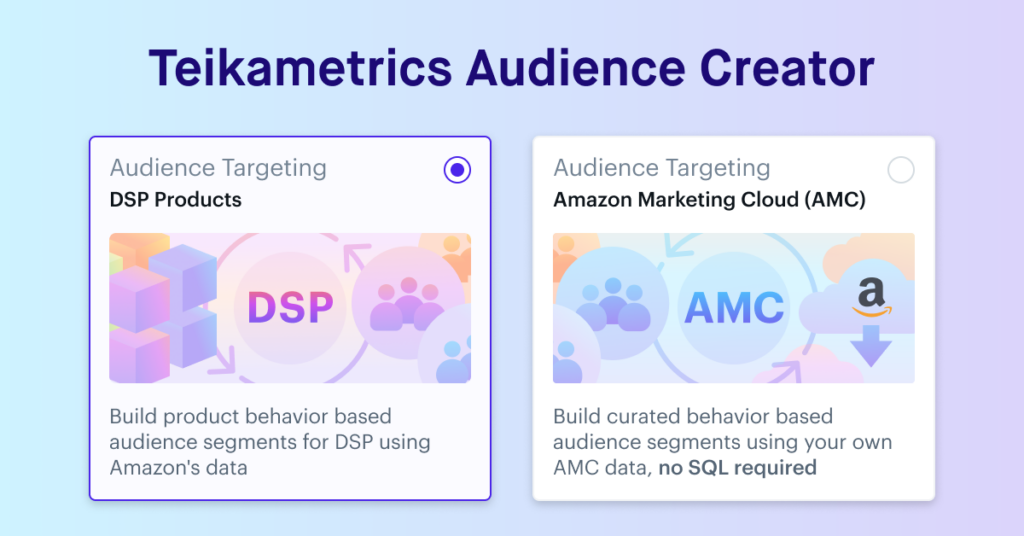Driving an ad click is what every brand hopes to do with their ecommerce advertising. But not every click is of the same value. For example, an ad click poached from a competitor is probably more valuable to your business than one on your own branded keyword that is likely to have been captured organically.
In this webinar, Kyle Barron, Teikametrics’ head of sales engineering, joins Andrew Waber, director of insights, to explain how and why successful brands are adopting this ‘value-based bidding’ strategy – rather than a rules-based one – in order to grow their Amazon business effectively over time.
→ Want to read more about incrementality? Download the free ebook
Here’s what we cover in the webinar:
- How bidding logic should be organized in order to win auctions when it’s appropriate, and step away when it’s not
- Common mis-steps from brands in terms of overbidding or underbidding
- Why a rules-based approach can miss key opportunities for driving profitable sales
- Outlining how to build a good value-based bidding program based on your business’ needs and circumstances
Scroll down to watch the full replay, or use the timestamps to jump to the topics you want to focus on:
![]() [4:15]
[4:15]
Kyle lays out how this webinar will be all about using “your marketing strategy… in order to drive the most incremental value.”
![]() [5:26]
[5:26]
“For a given keyword, how much is that worth to your business?” asks Kyle, making the point that each keyword has a different value for each product you sell, at different stages of its lifecycle.
![]() [7:46]
[7:46]
“Not every ad click on Amazon is worth the same amount to your business.” If you remember only one thing from this webinar, let it be this.
![]() [10:52]
[10:52]
“Why does keyword type matter?” asks Kyle. And then he gives us the answers, breaking down the differences between branded and category keywords.
![]() [16:36]
[16:36]
Andrew Waber hops in to share data from the top ten thousand terms across Amazon: “Across every single category, there are more generic or category type terms in the top ten thousand terms by search volume, as opposed to branded terms.”
![]() [18:14]
[18:14]
Back to Kyle: “These are the types of questions that you should be asking yourself when deciding what to set as a bid for a given keyword.” Answering these questions will help you to understand what the keyword is worth to you.
![]() [20:11]
[20:11]
What Kyle does all day: analyze the ad structures brands are using before they work with Teikametrics. What he’s learned from that: “ways that certain brands miss the mark or in some way are not fully optimized.” There are a lot of them.
![]() [26:47]
[26:47]
“This is a typical structure that we use at Teikametrics for our customers,” says Kyle as he launches into describing a ‘one parent product per campaign’ structure.
![]() [28:59]
[28:59]
Andrew cuts in again to share more data, this time from a study we recently did here at Teikametrics: “A search term that is producing conversions within an automatic campaign for a given product, stands to drive even higher conversion rates once it is moved as a keyword to a dedicated manual campaign for that same product.”
![]() [31:36]
[31:36]
“Fundamentals matter,” says Kyle, by which he means campaign structure, calculating maximum ad cost of sale, and having the tools to make iterative adjustments quickly.
![]() [36:55]
[36:55]
Here’s how to include product lifecycle and profitability tolerance in a good value-based bidding program
![]() [39:54]
[39:54]
Learn how Kyle looks at results in the right way: “One thing to consider is the change in conversion rate.”
![]() [42:50]
[42:50]
“Here’s an example of one of the analyses that we do in our audits.” Kyle shows how when you take into account all of the relevant variables, a brand may be underbidding or overbidding on any given keyword.
![]() [45:06]
[45:06]
Takeaways. Consider conversion rates and conversion volume, be smart about how you defend your own branded terms, and understand how popular generic terms are particularly valuable for newer brands or products.
[47:40] Q&A. What are other brands asking about bidding to value and how are we answering?





